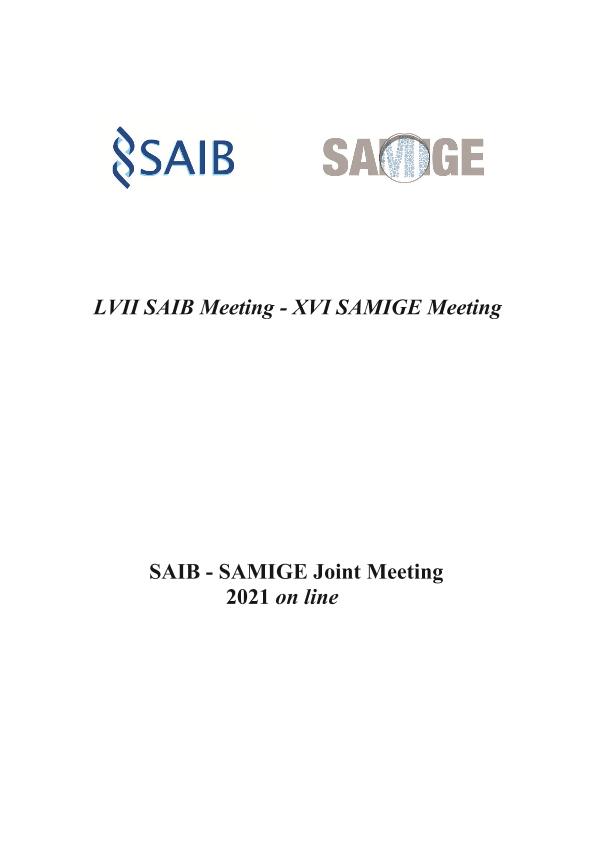Evento
Low Temperatura Induces PUFAS Production in a Native . Microalga Cryptophyte Plagioselmis SP
Almeyda, María Delfina ; Scodelaro Bilbao, Paola Gabriela
; Scodelaro Bilbao, Paola Gabriela ; Constenla, Diana Teresita
; Constenla, Diana Teresita ; Leonardi, Patricia Ines
; Leonardi, Patricia Ines
 ; Scodelaro Bilbao, Paola Gabriela
; Scodelaro Bilbao, Paola Gabriela ; Constenla, Diana Teresita
; Constenla, Diana Teresita ; Leonardi, Patricia Ines
; Leonardi, Patricia Ines
Tipo del evento:
Congreso
Nombre del evento:
LVII SAIB Meeting; XVI SAMIGE Meeting
Fecha del evento:
01/11/2021
Institución Organizadora:
Sociedad Argentina de Investigación en Bioquímica y Biología Molecular;
Título del Libro:
SAIB - SAMIGE Joint Meeting 2021
Título de la revista:
Biocell
Editorial:
Tech Science Press
ISSN:
0327-9545
Idioma:
Inglés
Clasificación temática:
Resumen
The nutritional value of cryptophytes is of great importance due to the presence of high amounts of polyunsaturated fatty acids (PUFAs), sterols and amino acids. Therefore, native cryptophytes have biotechnological potential as a source of high-value products for nutraceutical and aquaculture industries. The synthesis of these metabolites is conditioned by both the strain and the cultivation conditions, being temperature one of the main factors for PUFAs synthesis. The objective of this work was to evaluate the effect of low temperature stress on the production of PUFAs and sterols in the marine cryptophyte Plagioselmis sp. cultivated in a photobioreactor. Plagioselmis sp. was isolated from Bahía Blanca?s Estuary. Cultures were carried out for 10 days under two temperature conditions: 1) continuously at 20°C (Control) and 2) lowered to 11°C during the stationary growth phase (Low Temperature Stress, LTS). TAG and sterols were separated through thin layer chromatography (TLC) and quantified spectrophotometrically. Lipid extraction and fractionation into neutral lipids (NL), glycolipids (GL) and phospholipids (PL) were performed. These fractions were analyzed by gas chromatography. LTS significantly increased lipid production by ≈40%. Both temperature conditions showed TAG and sterol accumulation within the days of cultivation. NL was the main lipid fraction (≈63% of Total Lipids, TL) followed by GL (≈32% of TL) and PL (≈5% of TL) for both temperature conditions. PUFA content (expressed as % of total FAME) was significantly higher in the LTS condition (41.3%) than in the control (35.71%), mainly due to PUFAs from the NL fraction. Omega-3 fatty acids (ω-3 FAs) represented 19.62% of the Control and 22.72% of the LTS condition, while ω-6 FAs comprised 16.09% (Control) and 18.65% (SLT). The most abundant PUFAs were eicosapentaenoic (EPA) and docosapentaenoic (DPA), which significantly increased due to LTS from 14.6% to 18.17% (EPA) and from 5.35 to 9.29% (DPA). Under LTS the production of PUFAs was of 13.5 mg L-1 being 7.41 mg L-1 ω-3 FAs and 6.09 mg L-1 ω-6 FAs. The production of EPA and DPA FAs was 5.93 mg L-1 and 3.03 mg L-1, respectively. The results point out the potential of the native microalga Plagioselmis sp. to develop a sustainable biotechnological system for the production of PUFAs with nutraceutical and aquaculture applications.
Palabras clave:
MICROALGAS
,
PUFA
,
BIOACTIVOS
,
ALIMENTOS
Archivos asociados
Licencia
Identificadores
Colecciones
Eventos(CERZOS)
Eventos de CENTRO REC.NAT.RENOVABLES DE ZONA SEMIARIDA(I)
Eventos de CENTRO REC.NAT.RENOVABLES DE ZONA SEMIARIDA(I)
Eventos(PLAPIQUI)
Eventos de PLANTA PILOTO DE INGENIERIA QUIMICA (I)
Eventos de PLANTA PILOTO DE INGENIERIA QUIMICA (I)
Citación
Low Temperatura Induces PUFAS Production in a Native . Microalga Cryptophyte Plagioselmis SP; LVII SAIB Meeting; XVI SAMIGE Meeting; Buenos Aires; Argentina; 2021; 1-2
Compartir



